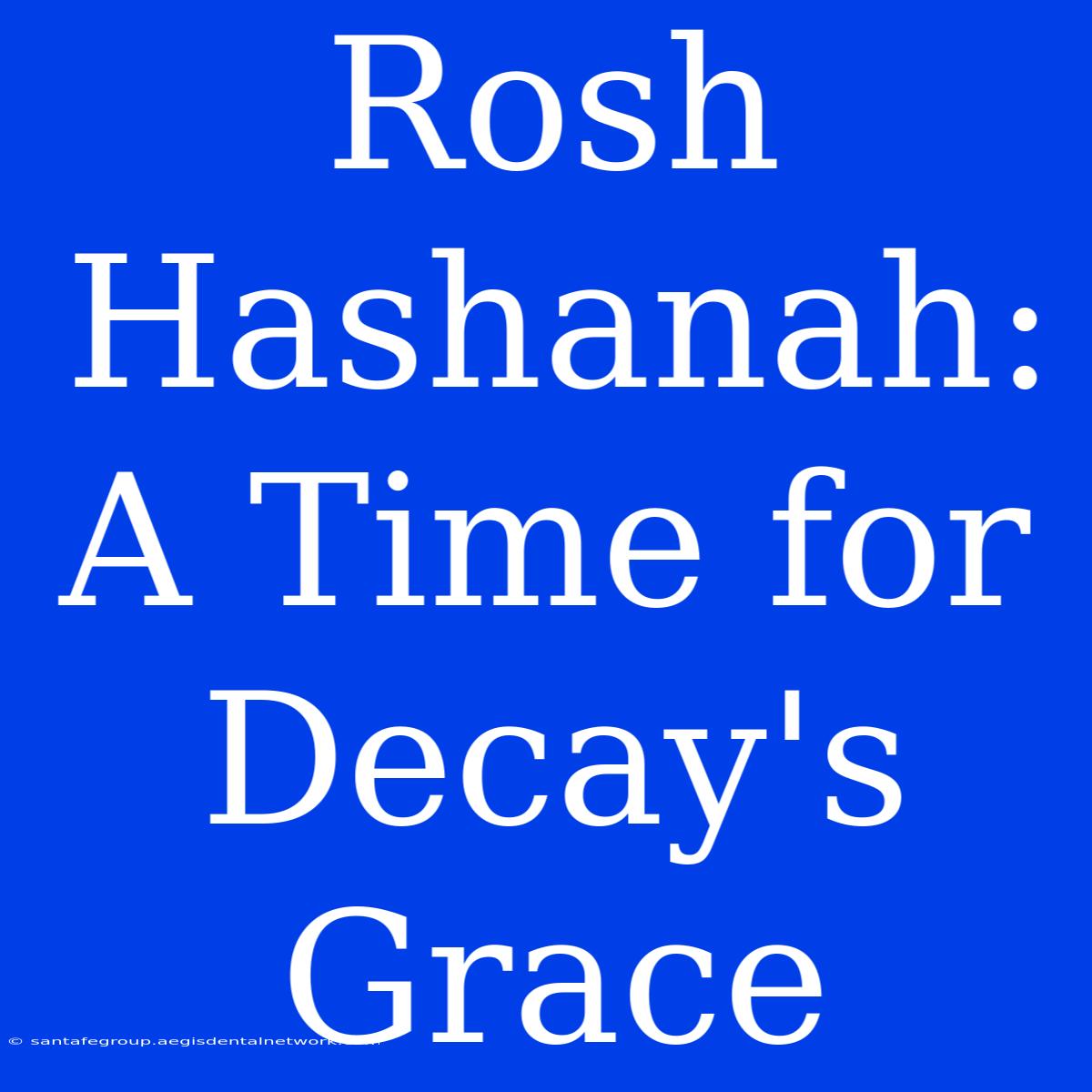Rosh Hashanah: A Time for Decay's Grace
What is Rosh Hashanah, and how can it be a time for decay's grace? Rosh Hashanah, the Jewish New Year, marks the beginning of the High Holy Days, a period of introspection and repentance. While often associated with renewal and fresh starts, Rosh Hashanah also presents a unique opportunity to embrace decay as a powerful force of transformation.
Editor Note: This article explores Rosh Hashanah and its connection to the concept of decay, offering a fresh perspective on this sacred time.
Understanding the power of decay allows us to appreciate the natural cycles of life and death. It is through decay that nutrients are returned to the earth, fostering new growth and renewal. This concept holds profound meaning for Rosh Hashanah, as we reflect on the past year and prepare for the year ahead.
Our analysis delved into the symbolism of Rosh Hashanah, exploring its roots in Jewish tradition and connecting it to the universal concept of decay. We examined ancient Jewish texts and modern interpretations, highlighting the inherent duality present in the celebration.
Key Aspects of Rosh Hashanah and Decay
| Aspect | Description |
|---|---|
| Teshuvah (Repentance) | Acknowledging past mistakes and seeking forgiveness. |
| Tzedakah (Charity) | Repairing past wrongs and contributing to the betterment of the world. |
| Rosh Hashanah Liturgy | Traditional prayers and blessings that evoke themes of renewal and introspection. |
| The Shofar | The ram's horn, blown during the High Holy Days, symbolizes the call to introspection and repentance. |
Teshuvah: Repentance and the Decay of Negative Patterns
Teshuvah, the central theme of Rosh Hashanah, signifies a turning away from harmful patterns and behaviors. It is through recognizing and confronting these aspects of ourselves that we can allow them to decay and transform into something more positive.
Facets of Teshuvah
- Role of Reflection: Teshuvah requires deep introspection and examining our actions, words, and thoughts.
- Examples: Acknowledging hurtful words, forgiving past wrongs, committing to positive change.
- Risks: The process of introspection can be emotionally challenging and might uncover unpleasant truths.
- Mitigations: Seek guidance from spiritual leaders, engage in acts of kindness, and practice self-compassion.
- Impacts: Teshuvah promotes growth, self-awareness, and a deeper understanding of ourselves.
Tzedakah: Charity as a Force of Renewal
Tzedakah, an act of charity, plays a significant role in Rosh Hashanah. It symbolizes the process of restoring balance and repairing the damage caused by our actions. This act of giving can be seen as a metaphorical decay of negativity, leading to renewal and growth.
Facets of Tzedakah
- Role of Compassion: Tzedakah cultivates empathy and recognizes the interconnectedness of all beings.
- Examples: Donating to charity, offering support to those in need, volunteering time and resources.
- Impacts: Tzedakah promotes social justice, alleviates suffering, and fosters a sense of community.
Rosh Hashanah Liturgy: Prayers of Transformation
The Rosh Hashanah liturgy is filled with prayers and blessings that acknowledge the cyclical nature of life and death. These prayers evoke themes of renewal and forgiveness, recognizing that decay is an essential part of the process.
Facets of Rosh Hashanah Liturgy
- Role of Symbolic Language: The liturgy employs powerful metaphors and imagery to evoke spiritual awakening and transformation.
- Examples: The prayer for forgiveness, the blowing of the shofar, the blessings for a good and sweet new year.
- Impacts: The liturgy guides participants through a journey of reflection, repentance, and hope for a renewed future.
The Shofar: A Call to Embrace Transformation
The shofar, a ram's horn blown during Rosh Hashanah, represents a call to introspection and repentance. It is a reminder of the fragility of life and the need to embrace transformation.
Facets of the Shofar
- Role of Symbolism: The shofar's piercing sound symbolizes a wake-up call to change and the cycle of birth, death, and rebirth.
- Examples: The shofar's call evokes feelings of awe, humility, and a yearning for spiritual connection.
- Impacts: The shofar prompts a deep sense of awareness and a willingness to embrace the process of transformation.
Rosh Hashanah offers a unique perspective on the transformative power of decay. By acknowledging the cyclical nature of life and embracing the process of repentance, we can move forward with renewed hope and a deeper appreciation for the natural world.

